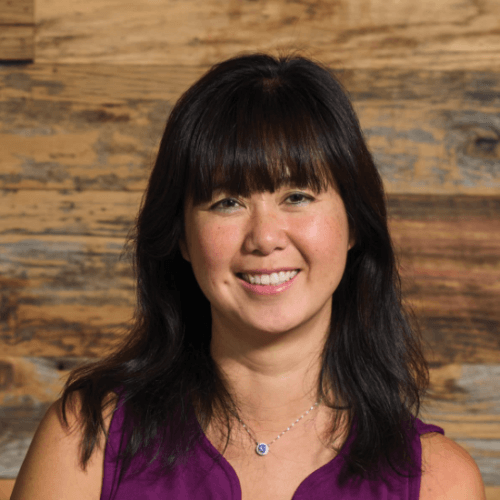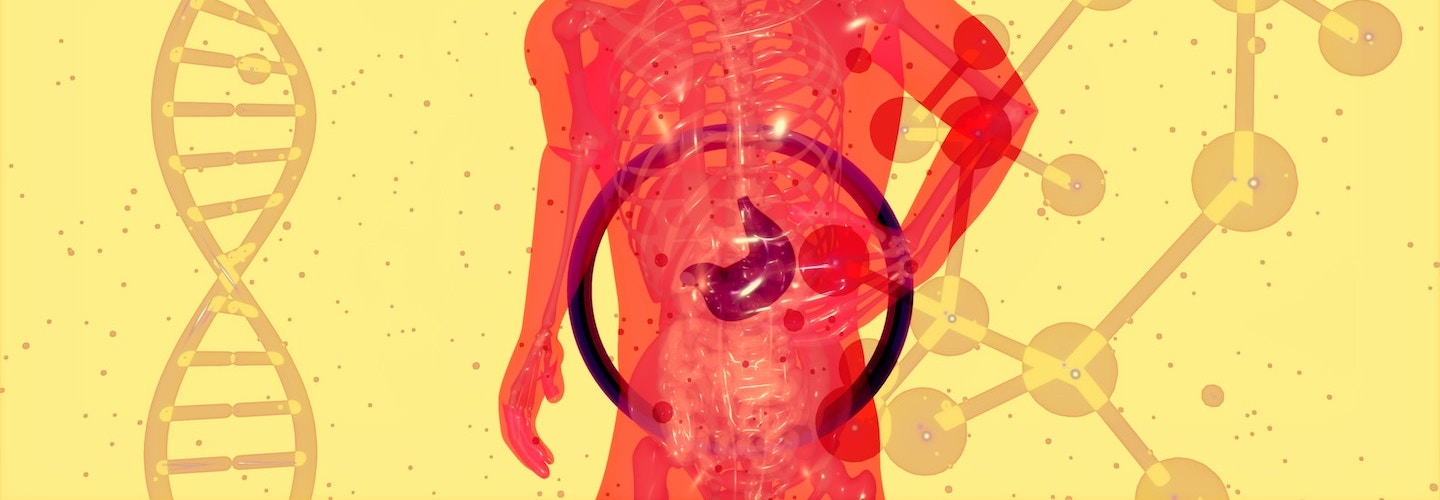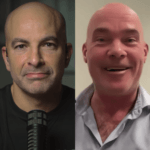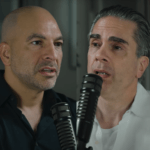Colleen Cutcliffe is an expert in molecular biology and co-founder of Pendulum Therapeutics, a company working to develop treatments for a variety of diseases by targeting the microbiome. In this episode, Colleen delves into the complexity of the microbiome, how it is tested, and how it changes over time. She explores how probiotics, prebiotics, and postbiotics affect the gut and makes a compelling case that well-developed products have the potential not only to enhance gut health but also to positively influence overall metabolic well-being. Colleen emphasizes the significance of a high-fiber diet in sustaining a thriving gut microbiome, shares insights on minimizing microbiome damage during antibiotic use, provides tips for fostering and preserving a healthy gut, and much more.
Subscribe on: APPLE PODCASTS | RSS | GOOGLE | OVERCAST | STITCHER
We discuss:
- Colleen’s background and current focus [4:45];
- The basics of the microbiome [7:15];
- The study of the human microbiome [15:15];
- Categories of bacteria, and the implications on health of the rapid evolution of bacteria [19:45];
- Methods for measuring and understanding the microbiome, and key indicators of microbiome health [28:30];
- The important role of fiber for promoting gut health through the production of butyrate [38:30];
- The case for manipulating gut bacteria via fecal microbiota transplant (FMT) [45:00];
- Dynamics of the microbiome: the gut-brain connection and how antibiotics, nutrition, stress, and more impact the microbiome’s diversity and function [50:15];
- Factors that influence the vaginal microbiome [55:15];
- The effect of gut microbes on obesity and challenges with fecal transplants in people [58:45];
- Beneficial strains of gut bacteria and strains commonly found in probiotics [1:01:15];
- The difference between a probiotic and a prebiotic, and how CFUs are a measure of the “active ingredient” [1:09:45];
- Considerations about how probiotic strains are produced, and more on the meaning of CFU [1:14:15];
- Mitigating the effect of antibiotics on the microbiome [1:22:30];
- What do we know about the effect of artificial sweeteners on the gut microbiome? [1:30:00];
- Why Akkermansia is a keystone strain with implications for metabolic health and an individual’s response to dietary interventions [1:36:15];
- The essential steps necessary to develop a robust probiotic for optimal health support [1:45:45];
- How Akkermansia helps control blood glucose, and potential implications of Akkermansia in weight loss, diabetes management, and more [1:48:45];
- Pendulum Therapeutics’ commitment to rigorous product develop [2:06:30];
- More details about the probiotic “Glucose Control” and other probiotics developed by Pendulum Therapeutics [2:13:00];
- Further studies of Akkermansia that have been proposed or are underway [2:20:30]; and
- More.
Colleen’s background and current focus [4:45]
- Peter connected with Colleen six months ago
- They figured out they were both at Hopkins at the same time
What did you do your Ph.D. in?
- Colleen did here Ph.D. in biochemistry and molecular biology, really thinking about enzymes and pathways and how they all interact with each other
- Then she did a postdoc at Northwestern ‒ we were looking for diagnostic markers for pediatric Wilms’ tumors
- Next she moved out to the Bay Area and worked in pharma
- We were developing drugs for Parkinson’s disease
- She followed a pretty traditional path of a scientist into pharmaceutical drug development
- Then she did what everybody does in Silicon Valley, she joined a startup company
- This was a DNA sequencing instrument company that went through rapid growth, went public
- On the other side of that, she started Pendulum Therapeutics
- It was really premised in the fact that things like probiotics and yogurts have been on the shelves for decades, but there actually hasn’t been a new ingredient introduced in over 50 years
- That’s because microbiome science wasn’t a real science until DNA sequencing technology enabled us to really be able to survey the microbiome and create these metabolic maps and start to approach it like a biochemical problem and a systems biology problem
- Advances in DNA sequencing technology allowed the nascent field of the microbiome to produce real products, and that’s what Colleen has been focused on for the last 10 years
The basics of the microbiome [7:15]
How do we define the microbiome?
- The microbiome is essentially all of the microbes that reside in and on us: bacteria, viruses, fungi, yeast
- They are on our skin, they’re in our nasal passages, they’re in our lungs and they’re in our guts
- Our gut runs from mouth to anus and is outside of our body, even though people don’t always think of it that way
What allows colonization of the gut? Is that set from birth?
- For a long time, we all believed that the mother’s womb was an entirely sterile environment and there were no microbes there at all
- Some recent studies have started to elucidate that there are some strains, but it’s very minimal
- When we think about the gut microbiome of an adult versus somebody who’s in the womb, it’s incredibly much more diverse once you become an adult
- The primary initial seeding of the microbiome is through the delivery in the vaginal canal
- And so we’re going to get gross for a second
- Literally as you’re being delivered, you are consuming fecal matter that is in the vaginal canal, and that’s your first seeding of microbes
- Infants have a very small diversity of microbes that are really tied to mother’s breast milk
- As you start to eat foods and as you start to get exposure of environments, then the diversity of your microbiome starts to really grow and flourish
- Then at some point during the aging process, the opposite starts happening
- You start to become less diverse in your microbiome as we age
You start out almost like a blank slate, you get a lot more diverse, and then as we age, you start to lose that diversity and therefore some key functions in the microbiome
When is peak diversity, what decade of life?
- It varies from person to person, but if you can remember a time where you could eat or drink whatever you wanted to and you didn’t have to worry about it, that would probably be the time
- Teenagers
You hear all of these sort of bumper sticker slogans about the gut biome, “It outnumbers us 10 to 1.” Is that true?
- Those numbers have come into question
- They’re nice to give people a framework for the fact that you have a ton of microbes in you, and that’s the important part
- Whether they outnumber 10 to 1 or 2 to 1 is probably not that important
“What is important is that they [microbes] make up a huge portion of your body mass as well as functions, and so it’s an important key part of your health.”‒ Colleen Cutcliffe
The idea is there are many cells that are not you between your mouth and your anus as there are you
How do they weigh so little relative to the rest of us?
{end of show notes preview}

Colleen Cutcliffe, Ph.D.
Colleen Cutcliffe earned her B.A. in Biochemistry from Wellesley College and Ph.D. in Biochemistry and Microbiology from Johns Hopkins University. She completed her postdoctoral studies at Northwestern’s Children’s Memorial Hospital. She has held senior positions at bioscience and pharmaceutical firms. Dr. Cutcliffe co-founded Pendulum Therapeutics which uses insights into the microbiome to develop health interventions and probiotics. She currently serves as the CEO of Pendulum. [Pendulum]






Peter – acronyms usage is off the chart, seemingly even more than NASA.
I’m surprised there was no mention of insoluble fiber supplements and the role they might play. I take a couple of doses of Konsyl every day for several reasons, but I’d really like to know about its effects on the microbiome.
No benefit to viruses? Do a quick Medline search for “bacteriophage” and enjoy!
Peter couldn’t think of any benefit from a virus. Perhaps the oncolytic virus companies will have a positive impact some day. There are several of them.
Given that initial seeding would occur during a vaginal birth delivery, has any science been done to compare the microbiomes of infants after a Cesarean-section delivery? And then comparisons longer term and any effects on health?
Peter – love this content! Any chance that you have any plans to cover more GI system topics in the future? Specifically interested in best approaches to IBD treatment / management through the Attia lens: do you see these patients in your own practice? Where does the treatment of these debilitating conditions fit into a longevity/healthspan framework?
I hope that there is a better treatment method (lifestyle/diet/alternate approach) than repeat bouts of corticosteroids and lifelong use of anti-inflammatories or whatever newfangled biologic is on the market (I need to get the skyrizi song out of my head).
Yogurt by FDA definition has to contain streptococcus thermophilus and lactobacillus bulgaricus. But, you can make “yogurt” at home with an Instantpot using other strains that are interesting. The book “Super Gut” by William Davis, MD is a great source of info on the why and how to make several types. (All the starting strains are available thru Amazon.)
The BiotiQuest company run by Martha Carlin also sells starting materials for making your special “yogurt” in addition to probiotic capsules. Having made several variations myself over the last couple years, I can say that the benefits are substantial and the products are much much tastier than anything from a grocery store.
Besides using special bacterial strains that you rarely or never see in commercial probiotics, you would typically ferment these products at home for 36 hours or so. This compares to commercial yogurts where fermentation is more like 4 hours. Even if the bacteria count doubles every 4 hours, going for 36 hours gives yogurt with hundred of times more CFUs. So, while you stomach acid kills off most of the bacteria, there are so many CFUs that a fair amount will make it to your lower GI.
For those of us who missed the Pendulum holiday discounts it would be nice if you arranged a member discount.
A great follow up discussion for this podcast episode is the effects of fasting on the microbiome. There are some fascinating papers on how fasting improves gut health by reducing bacteria that rely on our food and increasing bacteria that rely on our gut mucus, especially in regards to Akkermansia muciniphila.
I just came to look for that!
I’m stoked you’ve dug into microbiome. As someone who suffered IBS in a bad way and fully recovered, there’s more to offer here. So if anyone reads this and cares, red polyphenols and apple skin fiber is your key akkermansia food. There’s protocols out there that mix this with human milk oligosaccharides. Could be total BS, but this anecdote worked for me. Glad to know there is a product with actual strain. I bet coupling this product with this protocol would be a total blowout, er reset. At least equivalent to 40 bowls of colon blow cereal. Do the protocol every now and then, and keep the f away from GMO food, not because of the GM, but because of the pesticides it allows on the food.
I learned a lot here. It was long, but worth slogging through the details. Thanks
Member discount?